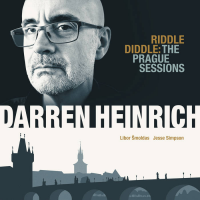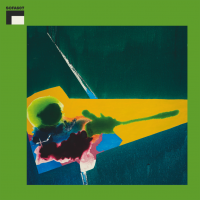Home » Jazz Articles » Reassessing » Shelly Manne: Shelly Manne and His Men at the Black Hawk 1
Shelly Manne: Shelly Manne and His Men at the Black Hawk 1
Recording live at a venue can be unforgiving, but this remastering from the original tapes by Bernie Grundman is better balanced (not to mention audible) than earlier editions. The series is a treat, and it would be nice to see all four volumes eventually reissued this way
Listeners will always argue over what was so-and-so's "best" recording, although that is a bit like fighting over which was Picasso's best painting. Interestingly, not a few of Manne's listeners would argue that the disk under review was one of, if not, the best. In late 1959, Manne took his working band up to San Francisco and recorded at the celebrated Black Hawk club. The gig lasted a few nights, and it was immediately apparent that something special was going on. Manne suggested to Lester Koenig of Contemporary Records that he get a crew over to the Blackhawk to record, and eventually, the entire performance was released. This is one of several recordings in the series which Craft has chosen to reissue in its Contemporary Records Acoustic Sounds series. The choice was inspired, because this is, especially in its present audiophile vinyl pressing, a historic recording.
The band opens very subtly, in an understated way, with "Summertime." George Gershwin wrote the music for "Porgy and Bess," first performed live in 1935. As of now, there are nearly 3,000 recorded versions. Some will say this is one of the finest. They are surely correct. The opening statement is on trumpet by the lamented Joe Gordon. Pensive and muted, if someone hears echoes of Dizzy Gillespie doing "Tin Tin Deo" with an ever so slightly Latin tinge, they could be forgiven, because that was in Gordon's pedigree. Gordon is then followed by Philadelphia-born Richie Kamuca with a kind of mournful statement, the blues, but really something more. And then there is the rhythm section of Manne, Victor Feldman on piano, and Monty Budwig on bass, with Budwig really framing the whole at the bottom. The subtlety with which they interact, and their striking creativity, never breaks the mood. The effect, overall, is hypnotic.
But Manne changes things up immediately with Tadd Dameron's "Our Delight." Better get buckled in, because this version is up, around about 240 bpm up. The solos are all impressive, but Kamuca seems to have been inspired for about 5 choruses worth of harmonic extensions which elicit a shouting "Go" from Manne at one point. And that is just Kamuca. Gordon follows with a briefer, but corkscrewing, spiralling solo which may well be mostly flash but, in this context, flash works too. This is where Victor Feldman finally cuts loose on piano, and while known for his block chords, his comping and broken voicings are believable, but only just. If someone is accustomed to hearing Feldman on vibes, his piano playing here may come as something of a shock. He is sensational. Budwig, who is masterful throughout, and Manne, who is himself, somehow keep this from careening out of control.
There is no letup on "Poinciana." Once again, the band is out of the gate at breakneck speed. Kamuca solos at equal length, although he eventually seems to run short of ideas. No matter, this is Gordon's turn to shine. Even though he makes a Chet Bakerish entrance, Manne is soon pushing him relentlessly, almost as if to see what he can get out of Gordon, who is now on the receiving end of the shouted encouragement. Feldman plays well, with Manne and Budwig getting into a kind of exchange in which both solo. There is very little to dislike. The set concludes with what was apparently an early recording of Frank Rosolino's "Blue Daniel," and the briefest of snippets from the band's theme.
While there have been earlier reissues of all the Black Hawk recordings, this one, (Vol 1) at least is sonically superior. Recording live at a venue can be unforgiving, but this remastering from the original tapes by Bernie Grundman is better balanced (not to mention audible) than earlier editions. The series is a treat, and it would be nice to see all four volumes eventually reissued this way.
Track Listing
Summertime; Our Delight; Poinciana; Blue Daniel; Blue Daniel alternate take; Theme A Gem from Tiffany.
Personnel
Shelly Manne
drumsMonty Budwig
bass, acousticVictor Feldman
multi-instrumentalistJoe Gordon
trumpetRichie Kamuca
saxophone, tenorAlbum information
Title: Shelly Manne and His Men at the Black Hawk 1 | Year Released: 2024 | Record Label: Craft Recordings
Tags
PREVIOUS / NEXT
Support All About Jazz
 All About Jazz has been a pillar of jazz since 1995, championing it as an art form and, more importantly, supporting the musicians who make it. Our enduring commitment has made "AAJ" one of the most culturally important websites of its kind, read by hundreds of thousands of fans, musicians and industry figures every month.
All About Jazz has been a pillar of jazz since 1995, championing it as an art form and, more importantly, supporting the musicians who make it. Our enduring commitment has made "AAJ" one of the most culturally important websites of its kind, read by hundreds of thousands of fans, musicians and industry figures every month.
























